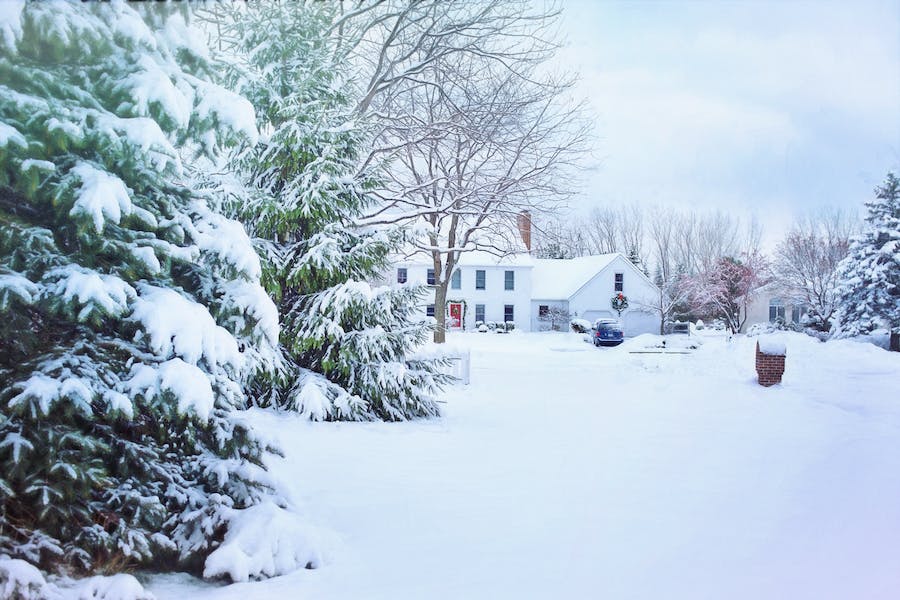As the leaves change color and the temperature drops, it’s not just a signal for pumpkin spice and cozy sweaters—it’s also a sign to prepare your home for the upcoming winter. Winterizing your home is essential to ensure that your living space remains energy-efficient and comfortable during the cold months. Not only does it save you from the chills and potential damage from the harsh weather, but it also saves you money on energy bills.
Understanding Winterization
As Forbes outlined, winterizing means getting your home ready for the cold by tackling interior and exterior elements. Ideally, This process should start in early fall, allowing ample time to address any issues before the winter truly sets in.
Exterior Checks
The exterior of your home faces the brunt of winter weather. Start by cleaning the gutters; clogged gutters can lead to water damage, so it’s essential to ensure they are debris-free. Inspect your roof and attic for any potential leaks and repair them. After all, a minor fix can prevent costly damage later. Check your chimney for blockages, as a clean vent reduces fire hazards and enhances efficiency.
Protecting your patio and ensuring your snow removal tools are ready can make winter more bearable and prevent damage to outdoor areas. Mr. Handyman emphasizes replacing window screens with storm windows, storing patio furniture, and checking your home for tree hazards, all of which are key to preparing the outside of your home for winter.
Interior Maintenance
On the inside, consider reversing the direction of ceiling fans to push warm air down. Insulate your attic to retain heat—a poorly insulated attic can be a significant source of heat loss. Service your HVAC system and inspect pipes on exterior walls to avoid freezing. Mr. Handyman suggests checking batteries in detectors and ensuring your sump pump is functioning correctly to safeguard against winter-related accidents.
Energy Saving Tips
Windows and Doors
Upgrading to energy-efficient windows can significantly affect your home’s heat retention, as mentioned by HomeLight. Dual-pane windows with a low U-factor rating are ideal. Insulating window coverings and plastic films can make a significant difference if new windows are outside budget.
Weatherproofing windows and doors by replacing weatherstripping and applying caulking are simple yet effective steps in minimizing drafts and heat loss.
Attic Insulation and Leak Fixes
Boosting your attic’s insulation can prevent heat from escaping, as can finding and sealing leaks around your home. An attic insulation with an R-value below R-38 can be considered under-insulated, so it’s worth upgrading.
Smart Heating
Investing in a smart thermostat can lead to substantial savings. The Department of Energy notes that setting your thermostat lower by 7°-10°F for eight hours a day can result in up to a 10% savings annually on heating.
HVAC and Water Heater Maintenance
Regularly servicing your HVAC is crucial; annual tune-ups extend the life of your furnace. Also, show some love to your water heater. Insulating it can reduce heat loss by 25%-40%, which, in turn, cuts down on your electric bill, as a water heater accounts for a significant portion of it.
When Selling Your Home
Winterizing your home can contribute to its market value and appeal. The best month to sell a house is often in spring, so getting a house ready to sell over the winter is a strategic move. Presenting a well-maintained and energy-efficient home can be a significant selling point for potential buyers.
Preparing your home for winter is not just about comfort; it’s about cost savings and efficiency. By cleaning gutters, inspecting the roof, chimney, and windows, and servicing your HVAC and water heater, you can ensure your home withstands the winter season’s challenges. Upgrading or insulating windows, boosting attic insulation, sealing leaks, and investing in smart thermostats are all steps toward an energy-efficient home.
As we’ve explored, taking the time to winterize your home correctly is not just a protective measure but also an economically wise decision that can even affect the selling potential of your property. By following these tips, you’re not just securing warmth and comfort for the colder months but also setting up a wise financial future by reducing energy costs and increasing your home’s value. So, before the winter chill sets in, take the proactive steps to winterize your home—it’s a move you’ll thank yourself for as the snow starts to fall.

